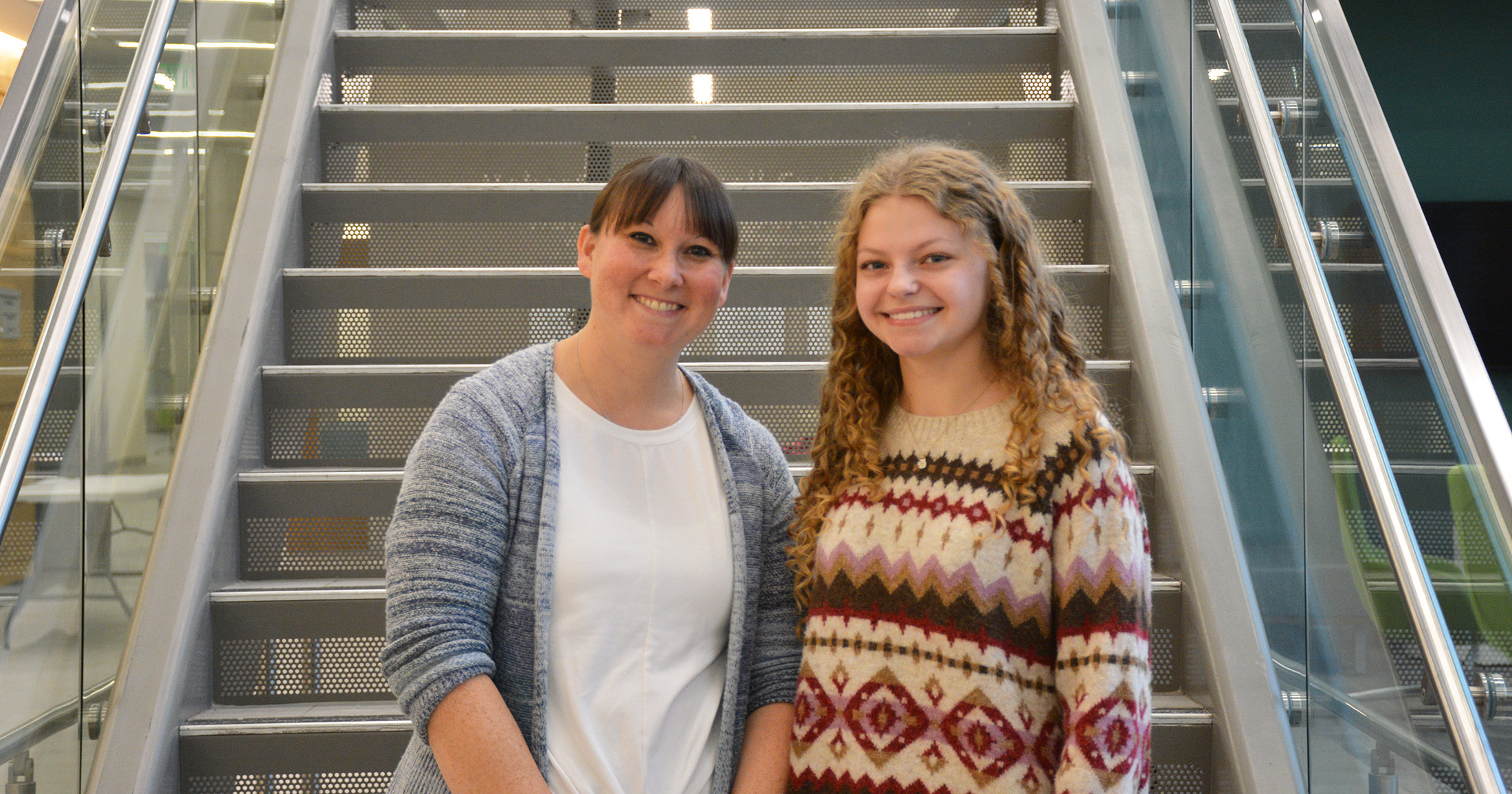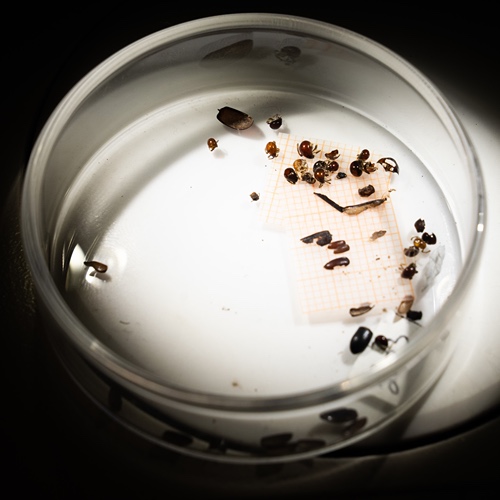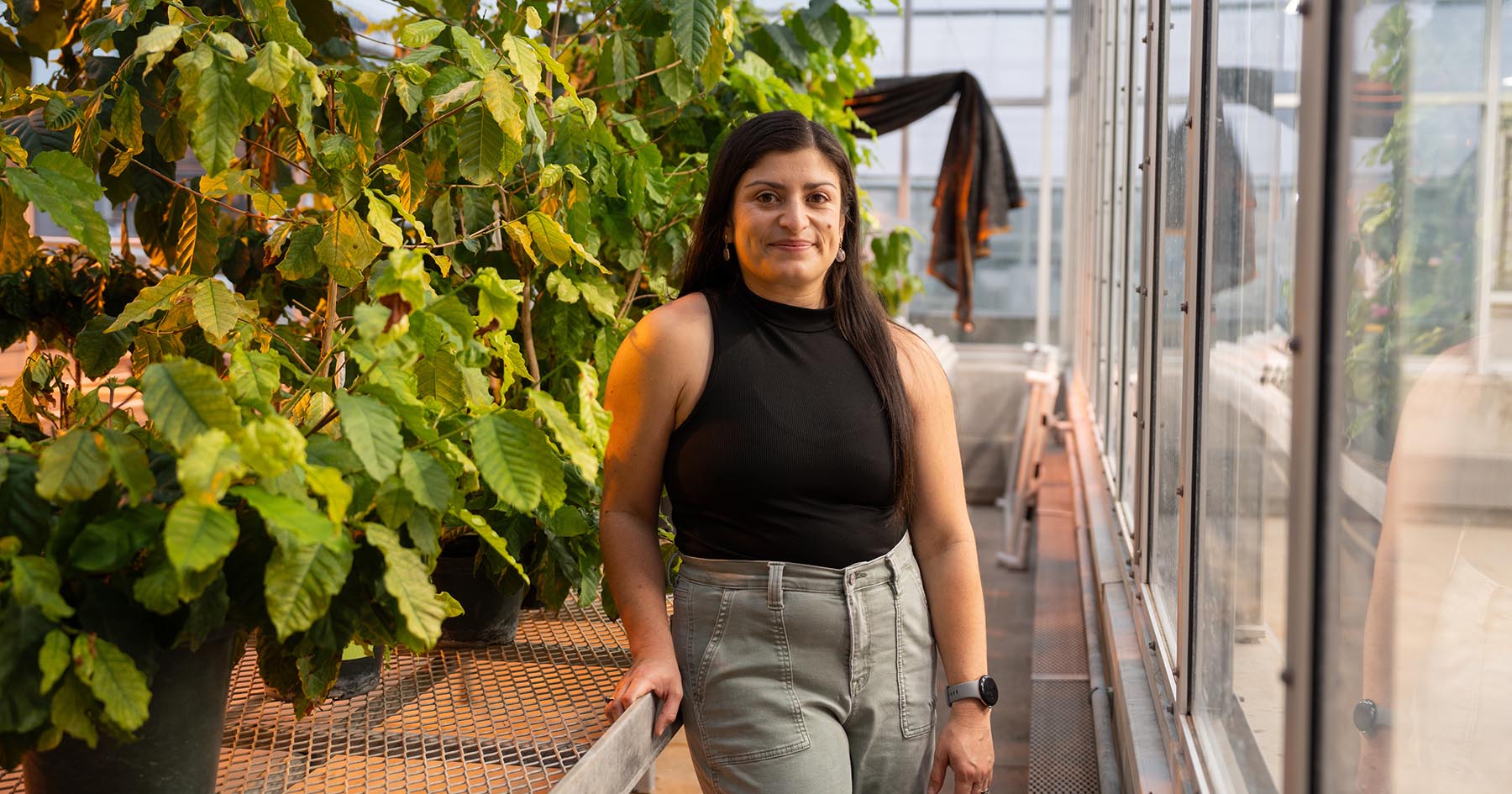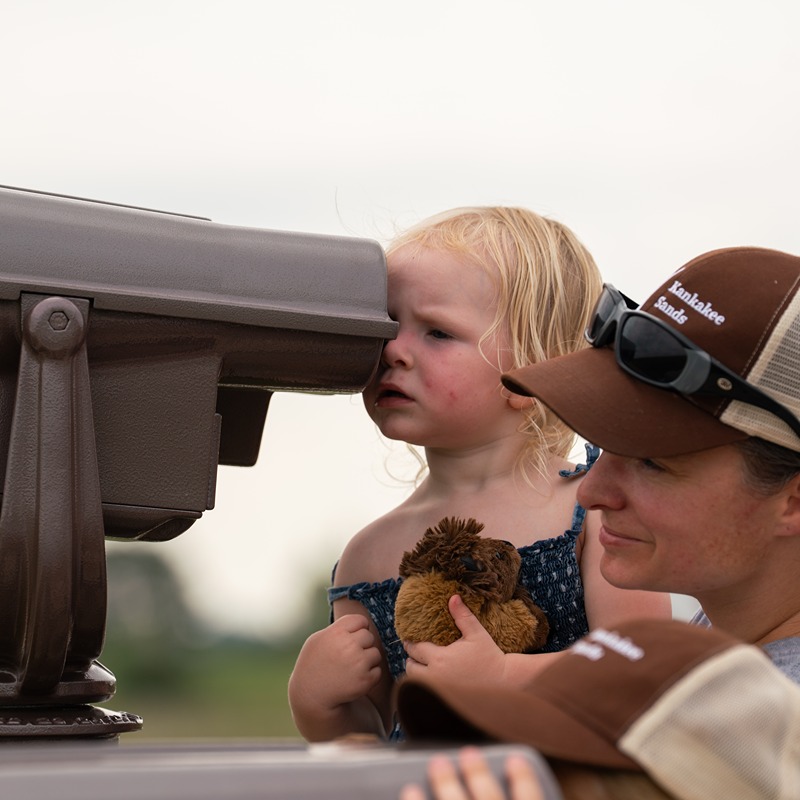Farm Research Prepares Students for Their Future
Much has changed at Purdue’s Agronomy Center for Research and Education (ACRE) over its 75 years, but one thing hasn’t: the opportunity for students to get hands-on experience. Students have participated in farm management and maintenance, and as the research conducted has evolved, they’ve also worked on projects from plant breeding and soil fertility to precision agriculture and hydrological experiments.
Here’s a snapshot of how ACRE has helped train students over the decades — including one of Indiana’s top agricultural officials.
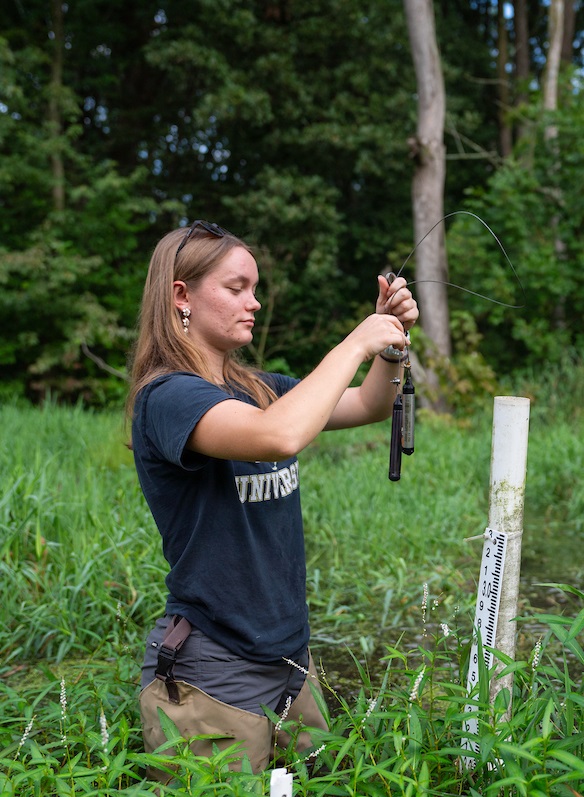
Alexus Arvin (Class of 2025, BS NRES)
In Alexus Arvin’s previous job as a backpacking guide in New Mexico she taught teenagers about “safety around mountain lions and bears, and how to cook their food” on their treks. Now a senior in natural resources and environmental science (NRES), Arvin says that experience sparked her passion for environmental science and water resource issues.
Her studies introduced her to Laura Bowling, department head and professor of agronomy. “I took Dr. Bowling’s course, environmental hydrology, and really enjoyed it.”
Her interest in hydrology led to undergraduate research at ACRE, where she contributes to the Drainage Water Recycling project and the Purdue Hydrologic Impacts Group, led by Bowling and Keith Cherkauer, professor of agricultural and biological engineering and interim director of NRES.
At ACRE, Arvin helps faculty and staff investigate how the wetland acts as a nutrient buffer by collecting water samples and tracking water levels. “Our focus is on how to reuse the runoff water. When we’re in a drought, we can reuse this water, which is especially important considering climate change,” she explains.
Arvin worked at ACRE last summer as well, but this time, her task was more interactive. “I got to be out in the corn and soybean fields, digging trenches for irrigation,” she says. There was a learning curve, but now I have a better understanding of the whole project.”
“It’s giving me hands-on experience,” Arvin says. “I get to be in nature and also learn things that will help me in the future.”
With minors in environmental policy and soil science, she’s on track for a 5-year program granting her a bachelor’s degree and a master’s degree in ecological and environmental engineering. She hopes to work in hydrology or soil remediation for a government agency.
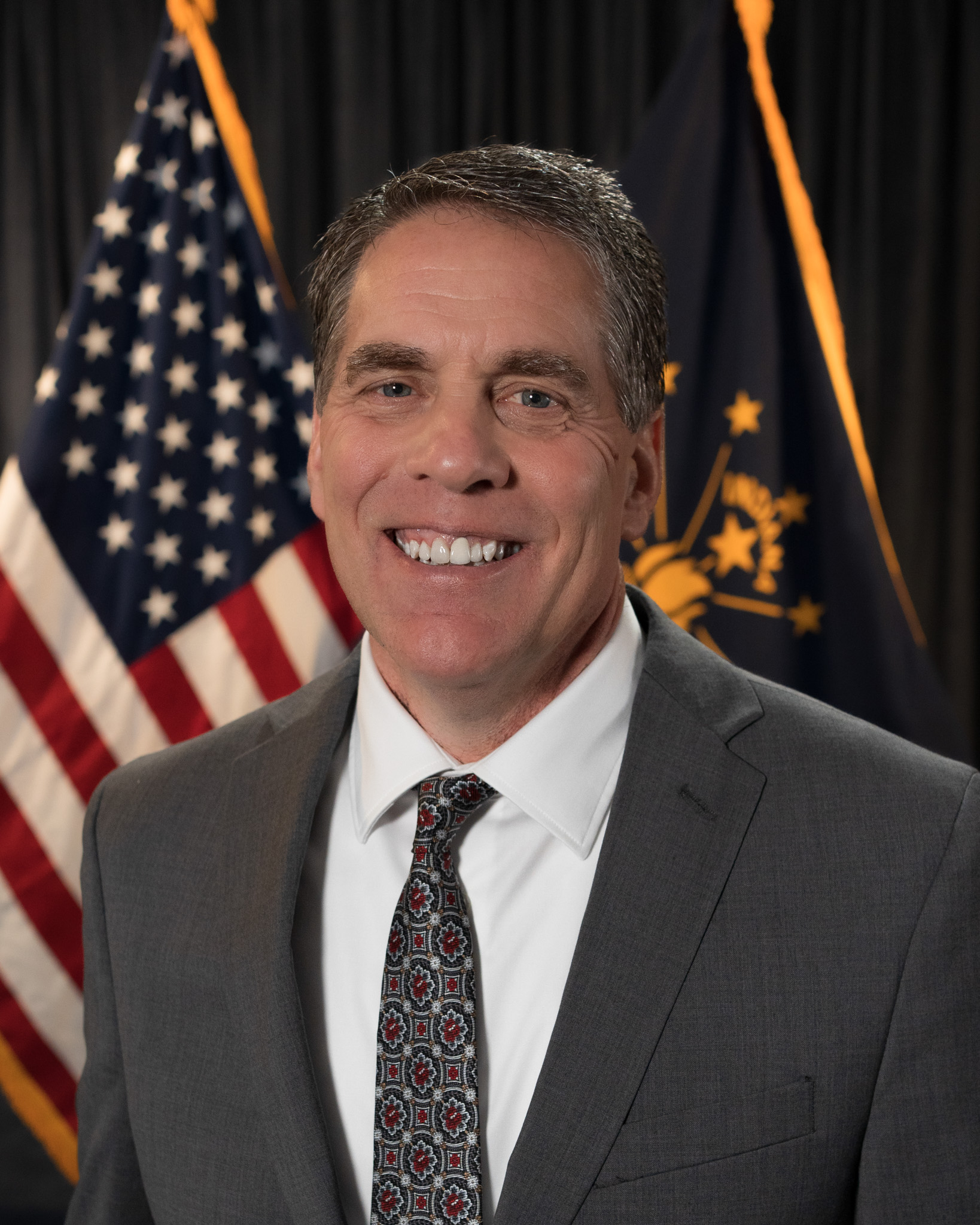
Don Lamb (BS ’89, Agricultural Economics)
“I remember two John Deere tractors that I used as mowers and a 1969 Chevy pickup truck. I thought it was the coolest truck that you could have,” says Don Lamb. Now director of the Indiana State Department of Agriculture (ISDA), he remembers his time at ACRE fondly.
He worked at the farm during his sophomore year at Purdue in 1987, and while he didn’t directly assist with research at the farm, “It gave me exposure to a lot of research and impacted what I wanted to do as a farmer,” he says.
Studying agricultural economics, Lamb worked at ACRE to help put himself through school — mowing, cleaning, painting and pulling weeds. “I grew up as a farm boy and I longed for the country. When I went out there, it felt like going home,” he explains.
Lamb is a second-generation farmer and still works alongside his father, brother and nephews at Lamb Farms, Inc., in Lebanon, Indiana. Working at ACRE “was the first time I had worked anywhere outside of my own farm,” he says. “I was a little nervous about it.” But he found calm and encouragement in Jim Beatty, former ACRE superintendent. Years later, they still stay in touch.
Lamb and his family have diversified their farm business to include a composting business, a company providing farmers with agronomy products and services, and a faith-based nonprofit offering guidance to farmers abroad. He also serves on the AgriNovus board and the Indiana State Fair Commission.
“There was a lot of pride at ACRE, which had a profound impact on how I look at agriculture,” Lamb says. “Even the simple things of keeping things looking nice showed the quality of research that was going on at the farm.”
